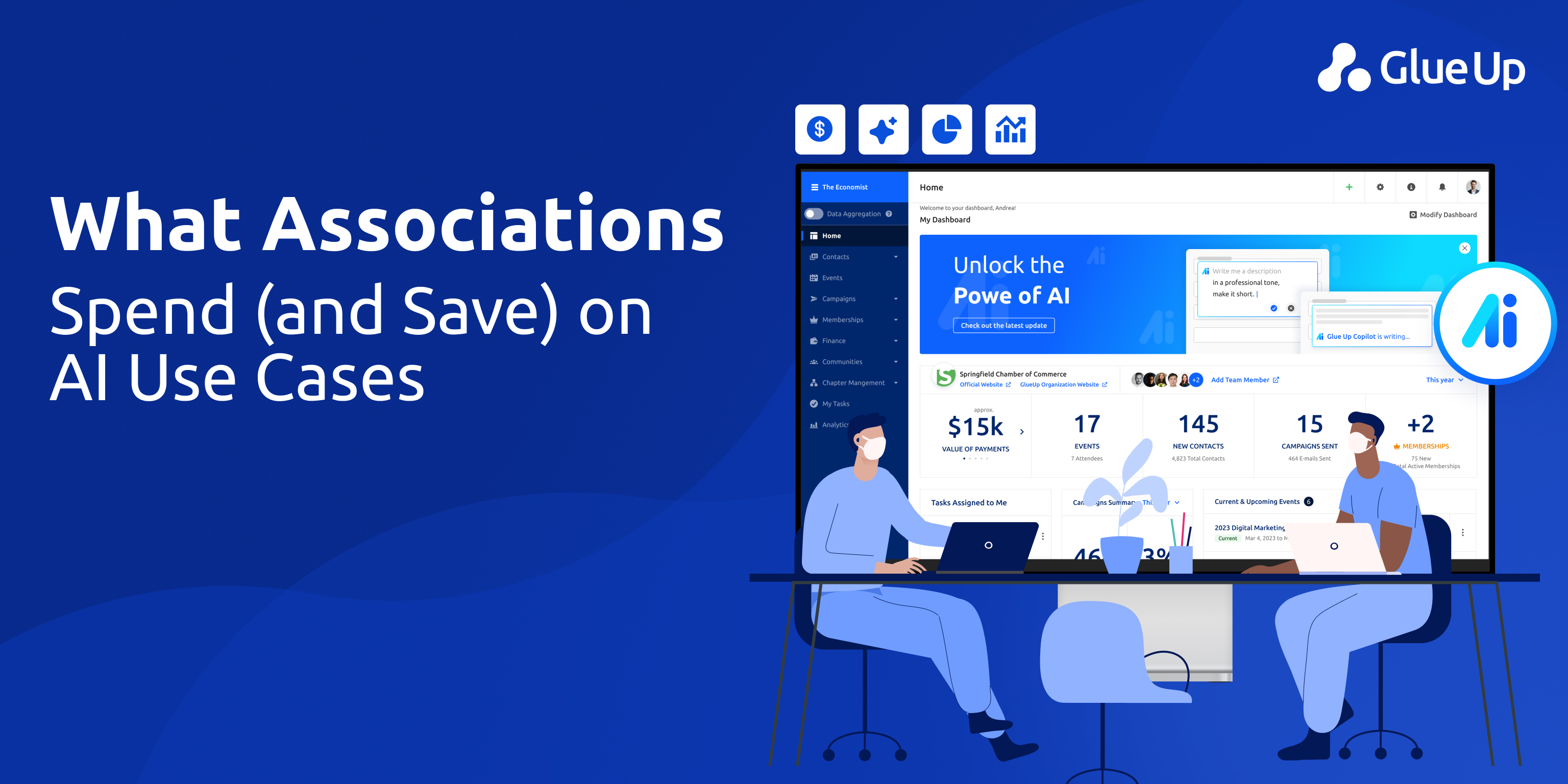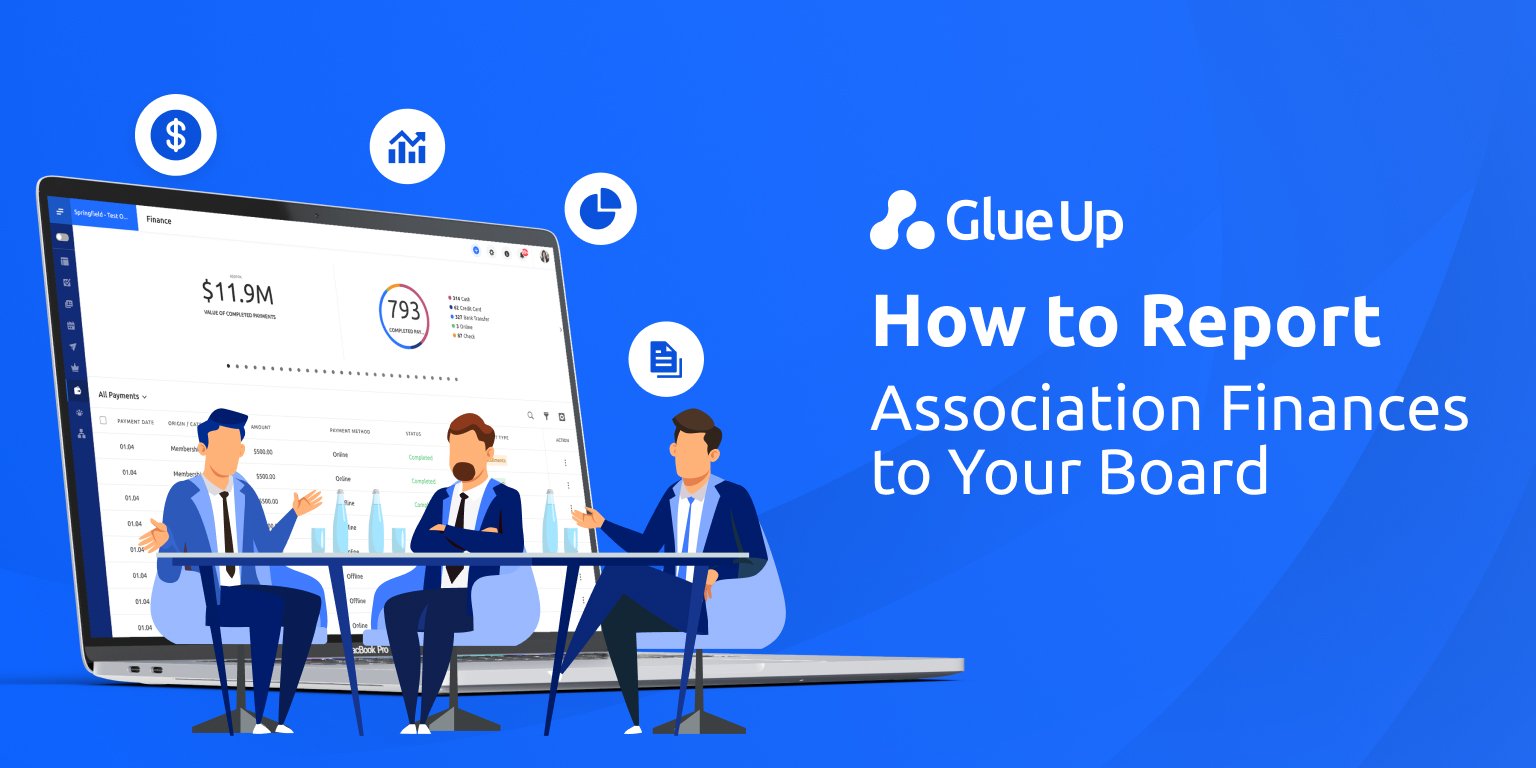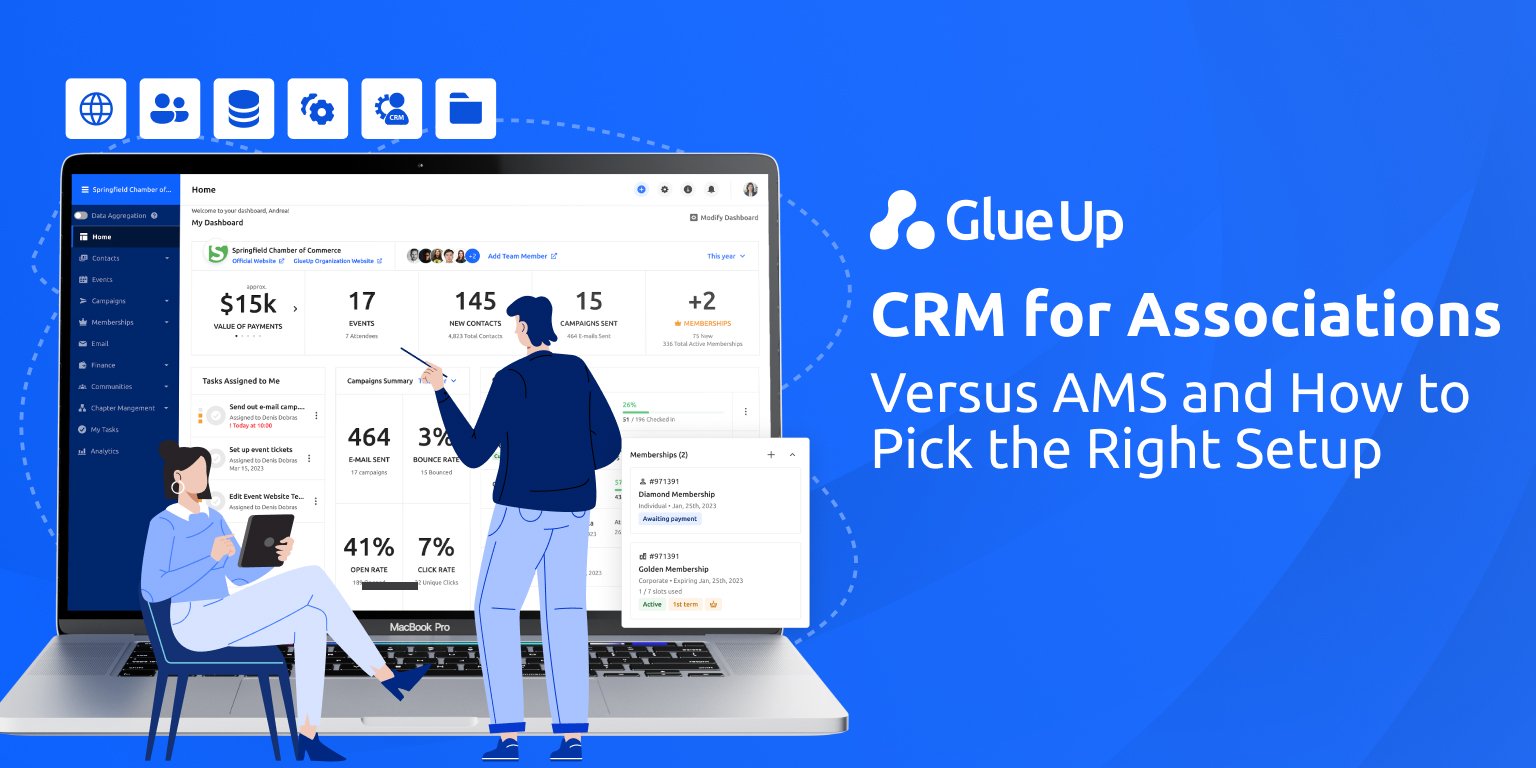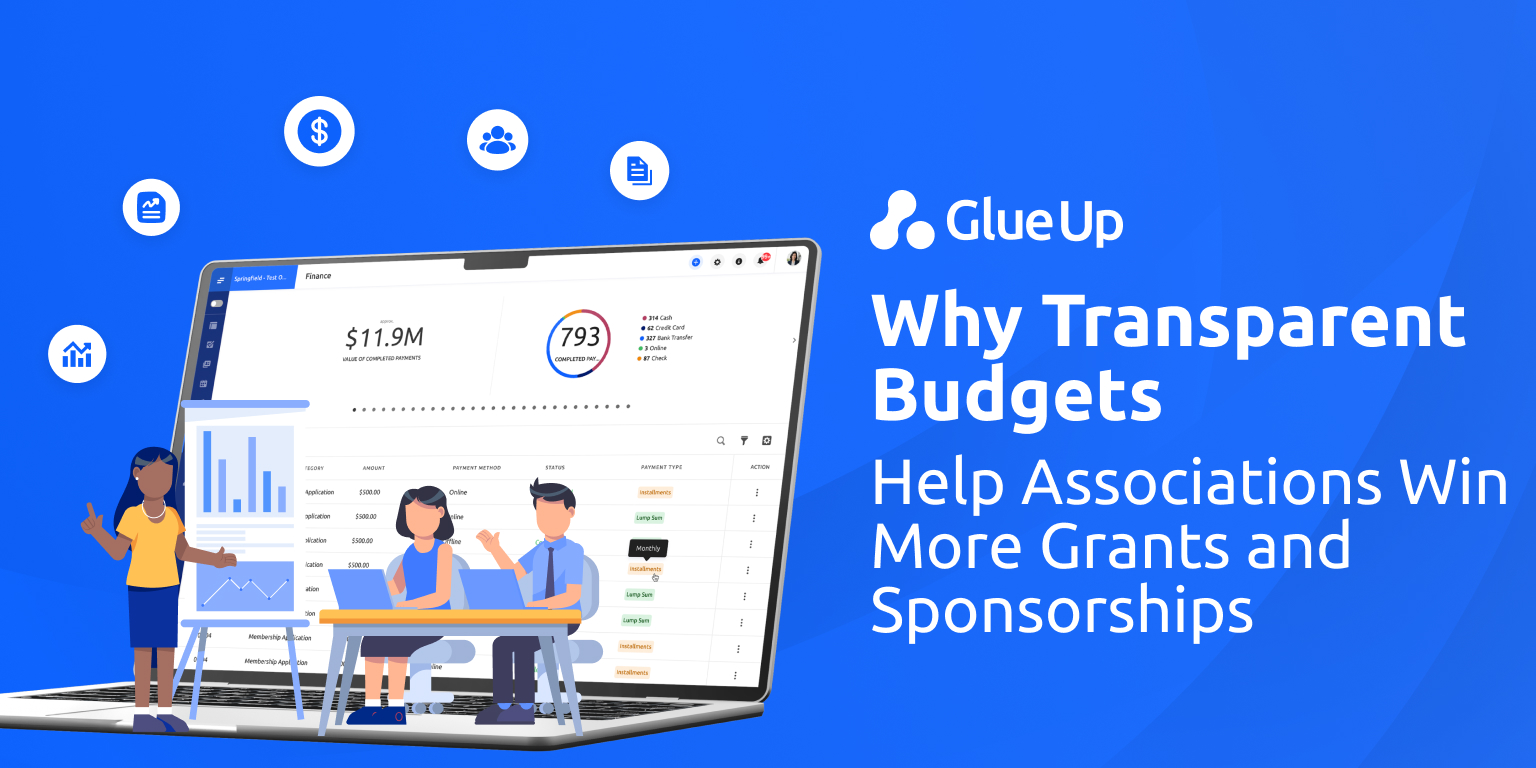
Every association leader knows the quiet tension that fills a budget meeting. Somewhere between the line item for “technology improvements” and “marketing initiatives,” someone inevitably asks: “How much should we spend on AI?”
That’s the heartbeat of Association expenditures on AI, the new decision that divides visionary boards from hesitant ones.
Because right now, across industries, AI is rewriting how organizations operate, but for associations, it’s more than a tool. It’s a financial experiment, a credibility test, and a question of timing. Spend too early, and you waste. Spend too late, and your members outgrow you.
Key Takeaways
Most associations don’t need massive AI budgets to see impact. The data shows sustainable adoption happens when you invest 0.5–1.5% of your total operating budget (or 5–10% of your tech spend) during the first year, enough to prove value without risking waste.
Associations often overspend on AI tools but underfund data readiness and staff enablement. The real savings come from cleaner data, smarter workflows, and better-trained teams.
Early AI returns are subtle: shorter renewal cycles, reduced admin hours, and faster reporting. Most measurable ROI emerges in service operations, HR, and event management once workflows mature.
Adopting AI within existing systems like Glue Up helps associations avoid redundant vendor costs, fragmented data, and compliance headaches. Embedded intelligence lowers risk, speeds adoption, and turns one purchase into multiple outcomes.
The most successful associations treat AI governance and transparency as strategic investments. Clear policies, bias checks, and disclosure practices protect reputation, and make members trust automation faster.
Quick Reads
Event Management Platform for Modern Organizations • Glue Up
End Follow-Up Fatigue: Send Automated Dues Notices • Glue Up
The Hype Curve and the Cost of Getting It Wrong
Picture this. A mid-sized association sends its leadership to a national tech conference. They return wide-eyed, armed with brochures about chatbots, predictive analytics, and member sentiment engines. Excitement turns into urgency. “We need to start investing now.” Within months, they license an AI platform, assign one staffer to “own it,” and run a pilot.
Then it stalls.
No one knows how to use it. Data is messy. Reports don’t make sense. Board members start asking, “So what exactly did we get for $80,000?” The enthusiasm fades into caution.
That’s how Association expenditures on AI often play out: well-intentioned, impulsive, underplanned. The irony is that most associations don’t fail because of technology, they fail because of sequencing. They buy before they’re ready, or they save in the wrong places.
The question isn’t “how much should you spend on AI,” it’s “what are you really buying when you spend?”
What the Research Actually Tells Us
Before budgets and projections, let’s look at the data.
Adoption vs Expectation Gap: Community Brands’ 2024 Association Trends report revealed something uncomfortable: 65% of Gen Z members use AI at work weekly, but only 18% of associations leverage AI in their operations. That means your youngest, most tech-aware members already expect smarter personalization than most associations can provide.
CFO Spending Caution: Deloitte’s 2024 CFO survey found that 63% of executives plan to allocate less than 1% of total budgets to AI this year, and only a third expect to spend between 1–5%.
Associations mirror that caution, lean budgets, board scrutiny, and fear of sunk costs.Corporate Pressure and the Benchmark Effect: Gartner and Wedbush estimate AI now claims 12–15% of total IT budgets in many sectors. While associations won’t hit those levels yet, board members see those numbers and start asking, “Shouldn’t we be somewhere near that?”
Savings Reality Check: McKinsey’s State of AI 2024 shows that fewer than half of organizations see cost reductions in year one. Savings show up later, in HR, service operations, and marketing. You don’t “save” on day one; you shift your cost structure.
Falling Unit Costs and Future Leverage: Stanford’s 2025 AI Index shows inference costs dropping rapidly, making smaller, specific AI use cases viable for associations. In two years, the same tasks will cost half.
That’s why associations need a steady spend curve.
The data doesn’t tell you to spend big. It tells you to spend right.
The Five Real Buckets of Association AI Spending
When leaders talk about Association expenditures on AI, they often think “software licenses.” But AI budgets are really made of five interconnected layers:
1. Embedded Tools with AI Capabilities
Your AMS, CRM, event, or marketing systems may already include AI, recommendation engines, predictive search, automated tagging, and email personalization. This category is often the most efficient investment because you’re paying for features within platforms you already use.
Glue Up, for example, includes AI-assisted workflows in its all-in-one management suite, helping associations analyze engagement data, personalize communication, and manage renewals.
2. Model Access and Platform Licensing
Think OpenAI credits, LLM access, or vector search models. It’s tempting to allocate big chunks here, but unless you have clean data, you’ll spend for capacity you never use. Start small. Pilot one model tied to one process, such as member retention emails or event pricing forecasts.
3. Data Readiness and Governance
No matter what AI you buy, your data quality decides the outcome. Cleaning, structuring, and labeling data is often 25–40% of real AI costs. Yet it’s the least visible line item. Neglect this, and you’ll pay later, in wrong predictions, irrelevant recommendations, and eroded trust.
4. Training and Enablement
The best model is useless if your staff doesn’t know how to prompt it. Budget for workshops, playbooks, and change management. When associations skip this, adoption dies quietly. Glue Up’s customers often train staff using the platform’s built-in guidance and AI prompts, keeping education inside the system rather than hiring external trainers.
5. Compliance, Risk, and Oversight
Legal review, data protection, and content accuracy checks may sound bureaucratic, but one careless AI output can cause PR or legal damage. Building guardrails early, policy templates, audit trails, disclaimers, is cheaper than crisis management later.
Together, these five buckets form the foundation of responsible spending. The trick is to balance them, not let the shiny parts (models and dashboards) overshadow the boring but essential ones (data and training).
The Quiet Places Where AI Actually Saves Money
The biggest returns from Association expenditures on AI rarely make headlines. They show up quietly, in hours saved, processes shortened, and frustrations reduced.
Membership Operations: AI assistants can summarize renewal data, detect at-risk members, and auto-personalize outreach. Staff who used to spend hours sorting spreadsheets now make decisions in minutes.
Events and Sponsorships: Smart event assistants recommend sessions, manage Q&A, and analyze post-event feedback, turning chaotic inboxes into clean dashboards. Sponsors get clearer ROI reports, and members get relevant experiences.
HR and Administration: Automating job postings, application screening, or onboarding reduces hours per hire, exactly where McKinsey found the highest early cost savings.
IT Modernization and Migration: Using AI for data mapping or AMS cleanup often cuts project timelines by 40–50%, according to modernization case studies.
Member Communication: Personalized newsletters, generated in minutes, maintain a consistent voice while freeing teams from template fatigue.
When board members ask, “Where’s the savings?”, show them this: AI doesn’t always cut costs; it reallocates time toward strategy.
Budget Benchmarks That Make Sense
Let’s translate research into actionable ranges for Association expenditures on AI.
| Organization Size | Pilot-Year Budget | % of Tech Budget | Scale-Year Budget |
|---|---|---|---|
| Small (<$5M) | $25K–$75K | 5–10% | $100K–$300K |
| Mid ($5–25M) | $100K–$300K | 5–10% | $300K–$750K |
| Large (>$25M) | $300K–$1M | 5–10% | $1M+ |
For most associations, that equals 0.5–1.5% of operating budget in year one, scaling to 1–3% after proof of ROI.
This keeps you below corporate levels while showing measurable discipline.
Use these principles:
Start small, prove value, scale by evidence.
Reinvest early savings into training and data governance.
Never fund expansion without a performance metric.
A Simple Financial Formula for Decision-Makers
Boards like math. Use this back-of-envelope ROI model when proposing your AI budget:
AI Net Impact = (Hours saved × fully loaded hourly rate × realization factor 0.6) + (Renewal lift × average dues) + (Sponsorship lift × gross margin) – (Training + data + vendor + compliance costs) If the first-year result is break-even or slightly negative, you’re doing it right. Year one is about capability, not profit. Year two is where ROI shows up.
Glue Up’s clients often reallocate up to 20% of expected API costs toward training and integration because the platform already embeds AI features, reducing that first-year drag.
How Glue Up Changes the Equation
Most associations buy technology like they buy coffee: one for every need. One CRM, one event tool, one community app, one analytics suite. Add AI to that, and you’ve got chaos.
Glue Up flips that model. It’s an all-in-one association management ecosystem with AI woven through it.
Here’s how it changes your cost structure:
No redundant vendor licenses — Glue Up consolidates AMS, events, finance, and community tools, so AI isn’t an add-on cost.
Data stays unified — AI learns from one clean data source, not seven disconnected systems.
Training time drops — Your staff uses one interface for everything, with in-platform prompts and support.
Faster governance adoption — Built-in consent management and communication workflows reduce compliance risk.
That’s not theory. Associations using Glue Up report saving hundreds of staff hours annually while improving reporting transparency and decision-making speed.
When you embed AI where your people already work, you turn spending into synergy.
Governance as a Value Proposition
Responsible AI is about reputation.
Transparency Builds Trust: Always disclose when AI is involved. Simple disclaimers (“This summary was AI-assisted”) turn potential fear into trust.
Bias Management: Associations represent diverse professions and people. Ensuring AI outputs reflect that diversity protects your mission.
Accuracy Loops: Establish review checkpoints for high-stakes content, like regulatory updates or member-facing legal information.
Privacy and Consent: Glue Up’s unified system includes permissions and opt-in tracking to safeguard compliance automatically.
Treat governance as insurance. It’s cheaper than reputation repair.
A 12-Month Roadmap for Practical AI Adoption
| Quarter | Focus | Core Actions | Spend Priority |
|---|---|---|---|
| Q1 | Pilot small wins | Test 2 use cases (e.g., renewal assistant + event summary AI) | Embedded tools, data prep |
| Q2 | Build literacy | Train teams, refine prompts, measure early ROI | Training, enablement |
| Q3 | Scale intelligently | Expand to membership and communications | Integration, automation |
| Q4 | Audit and optimize | Review savings, report to board, set next budget | Governance, refinement |
By the end of year one, aim to shift 15–20% of your repetitive workload into automated flows, while keeping AI costs under 2% of your total operations. That ratio is your sustainability signal.
Making the Case to the Board
When your board asks, “Why spend at all?” here’s how to respond:
Members are already using AI. You’re not introducing it—you’re catching up.
Costs are dropping. Waiting doesn’t make AI cheaper, but it does waste opportunity.
Competitors are learning faster. Associations that invest now gain capability and credibility.
Glue Up can absorb the risk. Because AI is embedded in the platform, you’re not betting the house—you’re upgrading what you already own.
Every CFO wants predictability. Glue Up delivers it by keeping AI inside a known cost structure—no fragmented billing.
What Smart Spending Feels Like
When Association expenditures on AI are done right, you’ll feel it before you measure it.
Meetings run faster. Reports arrive pre-analyzed. Member service queues shrink. Events generate more engagement. Staff stress drops.
And then one day, your board meeting feels different. Instead of asking, “What did we get from AI?” they ask, “What’s next?”
That’s the quiet shift from defense to offense. It’s the moment your association stops chasing innovation and starts operating it.
The Glue Up Difference: Spend Once, Scale Everywhere
Glue Up was built for associations that don’t have the luxury of trial and error. It’s where AI becomes practical: centralizing data, automating engagement, and enabling staff without adding complexity.
Membership renewals become intelligent workflows.
Events optimize themselves based on past engagement.
Member communication learns from behavior.
Financial reporting becomes visual.
And because it’s all in one ecosystem, your AI doesn’t need constant babysitting. It just works.
Moving From Curiosity to Confidence
AI isn’t the future. It’s the financial decision happening this fiscal year. The question isn’t whether you can afford to spend, it’s whether you can afford to misunderstand what you’re buying.
That’s why every conversation about Association expenditures on AI needs to move from hype to structure, from tools to systems, and from technology to trust.
Glue Up exists in that intersection, where ambition meets alignment.
Final Thought
Six months from now, another budget season will arrive. Will your association still be “exploring AI,” or will you have real savings, smarter systems, and a team that feels empowered instead of overwhelmed?
The ones who act now, with intention, discipline, and the right partner, won’t just spend smarter. They’ll build credibility in an era where intelligence, both human and artificial, defines leadership.
Book a demo today and see how Glue Up’s AI-powered association management ecosystem helps you plan, spend, and save smarter.



